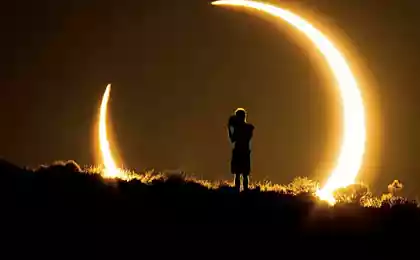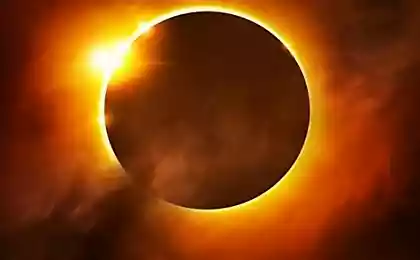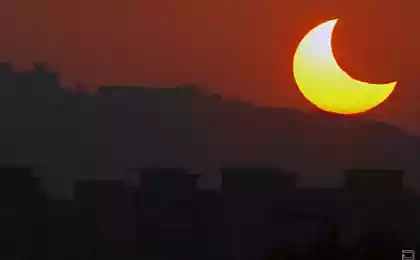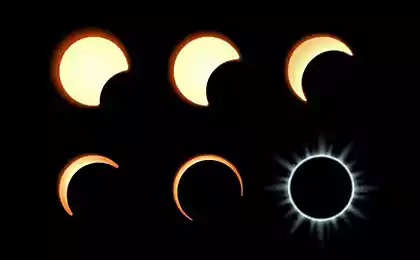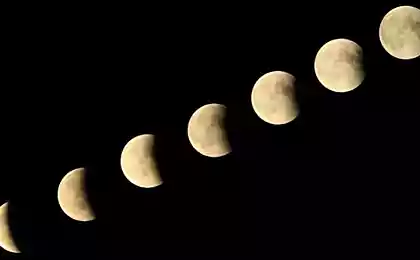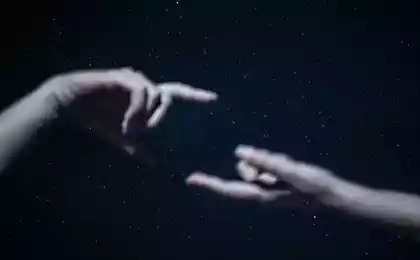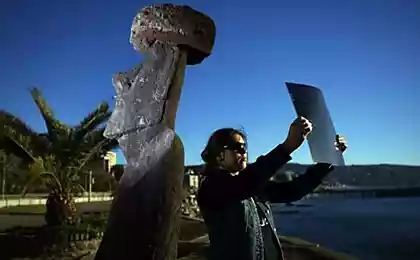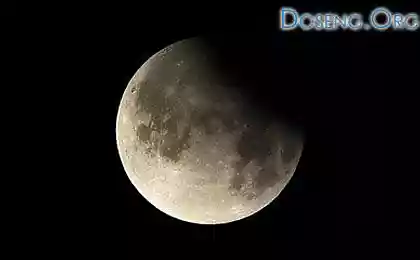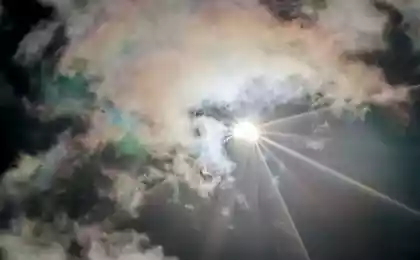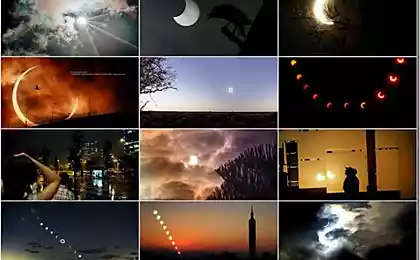489
Simple ways to look at the Sun in an Eclipse
Tomorrow residents of the Western part of our vast country will be able to observe a rare phenomenon — a solar Eclipse. Unfortunately, its epicenter will be in the Northern part of the Atlantic and the Arctic ocean, so most are lucky to Iceland. But we too will be something to see — for example, in Moscow there will be a phase 0.65.
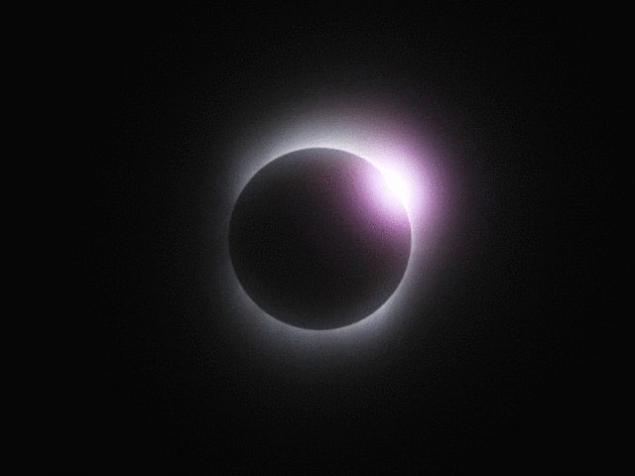
The most prolonged in the XXI century Eclipse, 22 July 2009. Tokyo, Japan, author Takeshi Kuboki
The last time a total solar Eclipse in territory of Russia was observed on 1 August 2008, and next time will have to wait until March 30, 2033. So catch the chance, the Lord, he is rarely. If you live in the depths covered by the Eclipse of the territories and firmly determined to observe this phenomenon, we recommend to prepare the material and technical base. And in fact, as the proverb says, the Sun through a telescope you can watch twice in a lifetime — the right and left eye.
As you know, the naked eye to look at an Eclipse is not recommended for safety. Of course, some time at the peak of the Eclipse, is valid until closed most of the area of the solar disk. But in the initial and the final phase is better to use protective devices. Let's start with the fact that in any scenario, you use no filters, optical devices like binoculars, spotting scopes and telescopes. This is the first rule. There is a good chance that you'll damage the retina and/or receive thermal burns of the cornea and vitreous. Again, this applies to the starting and ending phases of the Eclipse, when the brightness gets too high.
Do not expect to do the usual sunglasses, they will protect your eyes. All methods are time Mihailo Lomonosov like the smoked glass also are not recommended because of the low efficiency and unpredictability. The ideal option is a special solar filters. They can be purchased in stores for astronomy. But remember that if you put on or strapped the filter to the eyepiece, it can heat up and melt/burst. To avoid this, cover the lens of the device is an opaque cover, or native, or made from scrap materials. As an option — install the filter before the lens, then nothing will need to close. Oh, and forbid you from shooting Eclipse on any equipment without proper filters.
Life hack number one: as the filter for optical device or direct observation can be used glasses of the welder. Just keep in mind that the filter should fully cover the lens (lenses) devices, otherwise bye vision.
Life hack number two: if the filters are to build not, you can safely experience the Eclipse in the projection. To do this, take a sheet of white paper, put some distance to the eyepiece and see the projected image of the Sun. Paper, as they say, endure. Moving the appliance, make sure that the reflected light circle was just a circle and not oval. And the sharpness of the image "zooms" simply by moving the sheet closer or farther from the eyepiece.
Life hack number three: if you have no binoculars, no telescope, no telescope, not even points of the welder, but only a burning desire to observe the Eclipse, you can build the simplest version of the camera obscura. To this end, the sheet of cardboard cut a square hole with a side length of 3-5 cm Into the hole with tape glued a piece of foil and make it a tiny hole with a needle or pin. Ready: stand with your back (!) to the Sun, move your miracle device to any smooth and bright surface (asphalt, the wall of the house), and adjusting the distance, get the inverted image of the star. However, the method works best, if there is no stray ambient illumination. So the best thing to do zadernuv curtains tight and inserting a piece of cardboard between them. Experiment in advance to get used to and then not to lose precious minutes of the Eclipse, it will pass very quickly.
And another thing: when observing astronomical phenomena and celestial bodies always install the unit on a tripod. With more or less marked increase in 20 times and more, even the pinning of binoculars or a telescope to the window frame or the tree is not particularly helpful: we are beings and pliable, are unable to contact the stone, so all of our micromotion will quickly cause you'll just get carsick. Yes, and you can see the details on the shaking in the eyepiece the object will not work. In General, no pleasure, a confusion and a missed chance.
By the way, most magnification you don't need enough 20-60. And a large diameter front lens is also not required, after all look at the Sun, to catch a rare photons there is no need. Good luck! And nice observation. :) posted
Source: geektimes.ru/company/mailru/blog/247512/

The most prolonged in the XXI century Eclipse, 22 July 2009. Tokyo, Japan, author Takeshi Kuboki
The last time a total solar Eclipse in territory of Russia was observed on 1 August 2008, and next time will have to wait until March 30, 2033. So catch the chance, the Lord, he is rarely. If you live in the depths covered by the Eclipse of the territories and firmly determined to observe this phenomenon, we recommend to prepare the material and technical base. And in fact, as the proverb says, the Sun through a telescope you can watch twice in a lifetime — the right and left eye.
As you know, the naked eye to look at an Eclipse is not recommended for safety. Of course, some time at the peak of the Eclipse, is valid until closed most of the area of the solar disk. But in the initial and the final phase is better to use protective devices. Let's start with the fact that in any scenario, you use no filters, optical devices like binoculars, spotting scopes and telescopes. This is the first rule. There is a good chance that you'll damage the retina and/or receive thermal burns of the cornea and vitreous. Again, this applies to the starting and ending phases of the Eclipse, when the brightness gets too high.
Do not expect to do the usual sunglasses, they will protect your eyes. All methods are time Mihailo Lomonosov like the smoked glass also are not recommended because of the low efficiency and unpredictability. The ideal option is a special solar filters. They can be purchased in stores for astronomy. But remember that if you put on or strapped the filter to the eyepiece, it can heat up and melt/burst. To avoid this, cover the lens of the device is an opaque cover, or native, or made from scrap materials. As an option — install the filter before the lens, then nothing will need to close. Oh, and forbid you from shooting Eclipse on any equipment without proper filters.
Life hack number one: as the filter for optical device or direct observation can be used glasses of the welder. Just keep in mind that the filter should fully cover the lens (lenses) devices, otherwise bye vision.
Life hack number two: if the filters are to build not, you can safely experience the Eclipse in the projection. To do this, take a sheet of white paper, put some distance to the eyepiece and see the projected image of the Sun. Paper, as they say, endure. Moving the appliance, make sure that the reflected light circle was just a circle and not oval. And the sharpness of the image "zooms" simply by moving the sheet closer or farther from the eyepiece.
Life hack number three: if you have no binoculars, no telescope, no telescope, not even points of the welder, but only a burning desire to observe the Eclipse, you can build the simplest version of the camera obscura. To this end, the sheet of cardboard cut a square hole with a side length of 3-5 cm Into the hole with tape glued a piece of foil and make it a tiny hole with a needle or pin. Ready: stand with your back (!) to the Sun, move your miracle device to any smooth and bright surface (asphalt, the wall of the house), and adjusting the distance, get the inverted image of the star. However, the method works best, if there is no stray ambient illumination. So the best thing to do zadernuv curtains tight and inserting a piece of cardboard between them. Experiment in advance to get used to and then not to lose precious minutes of the Eclipse, it will pass very quickly.
And another thing: when observing astronomical phenomena and celestial bodies always install the unit on a tripod. With more or less marked increase in 20 times and more, even the pinning of binoculars or a telescope to the window frame or the tree is not particularly helpful: we are beings and pliable, are unable to contact the stone, so all of our micromotion will quickly cause you'll just get carsick. Yes, and you can see the details on the shaking in the eyepiece the object will not work. In General, no pleasure, a confusion and a missed chance.
By the way, most magnification you don't need enough 20-60. And a large diameter front lens is also not required, after all look at the Sun, to catch a rare photons there is no need. Good luck! And nice observation. :) posted
Source: geektimes.ru/company/mailru/blog/247512/
Honey elixir health with turmeric and ginger
Natural eco-friendly nail Polish for the stove in 3 steps


